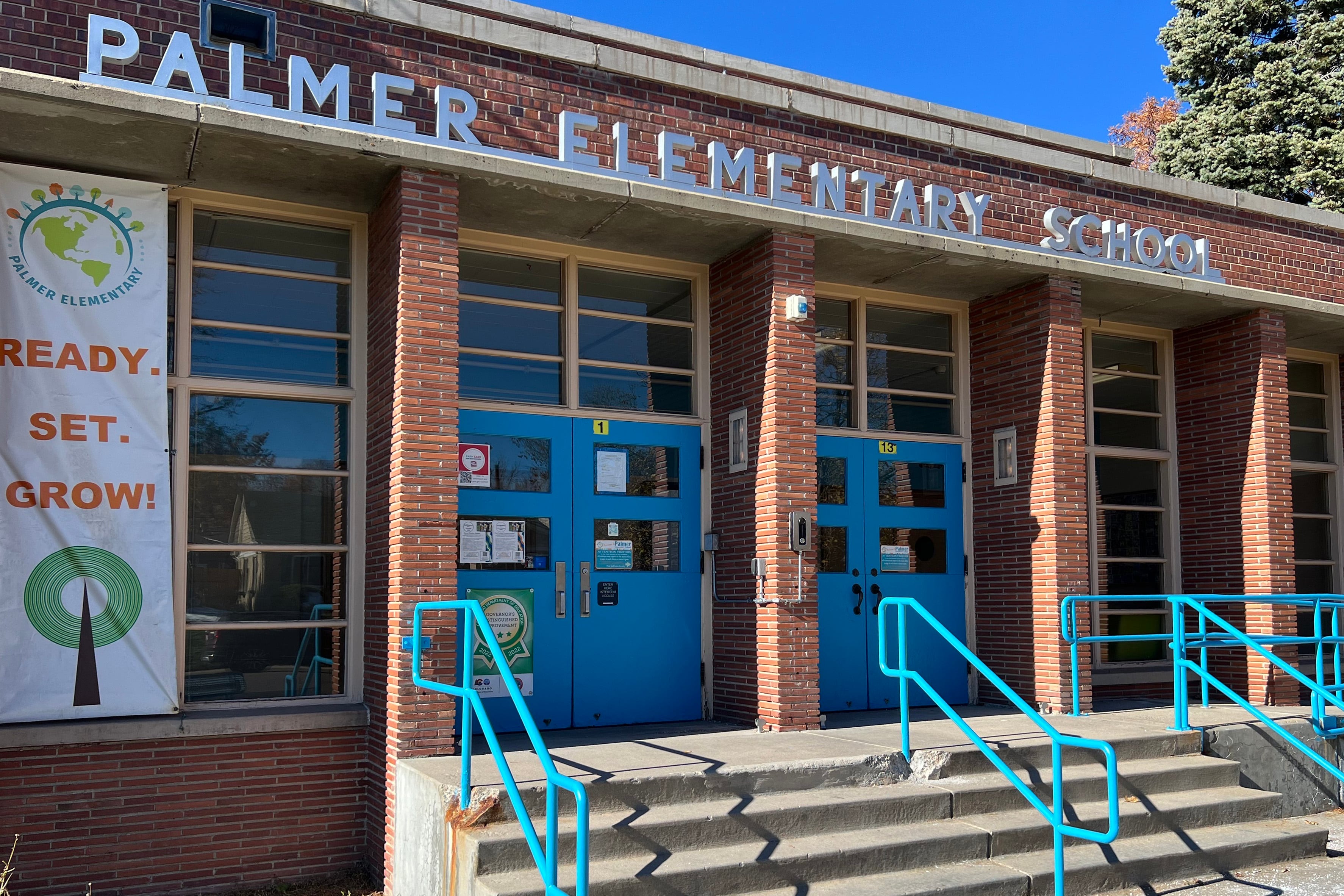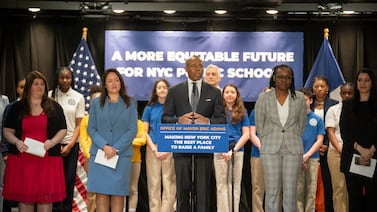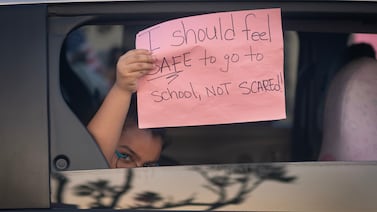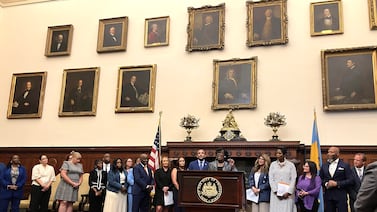Sign up for Chalkbeat Colorado’s free daily newsletter to get the latest reporting from us, plus curated news from other Colorado outlets, delivered to your inbox.
One of the Denver elementary schools that will close this spring will reopen in the fall as a preschool center. Another will be the new home of an existing middle and high school that serves students who have struggled elsewhere.
The fate of three more soon-to-be vacant buildings is still up in the air.
The Denver school board voted in November to close seven schools at the end of the school year and partially close three more due to declining enrollment. But only five of the 10 schools are in standalone buildings that will become empty this summer. The other five schools share buildings with other schools that will remain open.
As falling birth rates lead to enrollment declines across Colorado, more and more school districts find themselves facing the same difficult questions as Denver: When is it necessary to close a school because of low enrollment? And what should the district do with the empty building?
Some districts, including Jeffco Public Schools, have sold shuttered school buildings to local municipalities, housing developers, or private schools. Others, like Aurora Public Schools, have reopened some buildings as magnet programs. The Thompson School District in Loveland worked with a nonprofit to convert one of its vacant buildings into a youth homeless shelter.
Denver Public Schools officials recently updated the school board on plans for repurposing the five buildings that will become vacant this summer, which they have pledged not to sell. The plans were informed by the results of a survey sent to families at the five elementary schools, as well as by community meetings at three of the schools: Palmer, Castro, and Columbian.
What will happen to the five buildings?
Palmer Elementary School, located at 995 Grape St., will become a preschool center for the 2025-26 school year. Palmer currently has three preschool classrooms and will expand to four preschool classrooms next year, in line with what families said they wanted.
The district hasn’t yet decided what to do with the other classroom space in the building.
The school library at Palmer will remain open to the community, though district officials are still figuring out the details. The district is “exploring both physical separation” from the preschool classrooms “and time-limiting library access to ensure that the safety of our students remains our top priority,” said Andrew Huber, the executive director of enrollment and campus planning for DPS, in comments emailed to Chalkbeat by a district spokesperson.
The repurposing of Palmer will take minor construction work to bring the building into compliance as a standalone preschool center, Huber said. The district does not yet have a cost estimate, he said, but plans to pay for the renovations with funding from a bond measure approved by Denver voters in 2020 that was earmarked for preschool.
Palmer’s playground was previously updated with money from the 2020 bond. In total, the district spent at least $4.6 million of 2020 bond dollars on the five closing elementary schools whose buildings will be vacant or repurposed next school year.
Castro Elementary School, located at 845 S. Lowell Blvd., will reopen this fall as the new home of Summit Academy, a district-run “pathways school” for middle and high school students who’ve struggled at other schools and may be at risk of dropping out.
Several community members — including Virginia Castro, the widow of Richard T. Castro, the civil rights activist for whom the elementary school was named — campaigned for Summit Academy to take over the building, even as the school board rejected an application from a Denver charter school, Compass Academy, that asked to do the same.
Summit Academy is currently located about two and a half miles south of Castro in a building that community advocate Milo Marquez, co-chair of the Latino Education Coalition, described as a former bank building without a gym or sports fields.
“I visited the school and left with the feeling that those students and their dedicated teachers and administrators deserve a real school,” Virginia Castro told the school board in January.
DPS will spend about $250,000 this summer to move Summit Academy’s furniture and materials to the Castro building, redo the signage and paint, add security cameras, and buy additional high school-sized furniture, Huber said.
The district expects to spend $750,000 more over the next year to add science labs to the building, he said. The money will come from a separate bond measure Denver voters approved in 2024. The 2024 bond included funds earmarked for school reconfigurations.
Despite surveying parents and convening a community meeting, the district doesn’t yet have a plan for the reuse of Columbian Elementary School, located at 2925 W. 40th.
The Columbian community expressed an interest in the building becoming a standalone preschool center, like Palmer, but the district doesn’t need more preschool seats in the northwest part of the city, officials recently told the school board.
Some community members asked about Columbian becoming a child care center for babies and toddlers ages 0 to 3. District officials said they were open to the idea, but it would take time to partner with the city or a community organization to make that happen.
The next step is for the district to hold more community meetings and invite families and educators from other elementary schools in northwest Denver to brainstorm, officials said.
The district has not yet held community meetings at Schmitt Elementary School, located at 1820 S. Vallejo St., or the International Academy of Denver at Harrington, located at 2401 E. 37th Ave. Huber said that’s because no single reuse emerged as the most popular option when the district surveyed families at those two schools.
“At Harrington and Schmitt, the community had diverse ideas and distributed feedback about possible uses of the building, suggesting that we should take our time making the right decision rather than rushing it,” he said.
Denver Public Schools has repurposed vacant buildings before. In 2021, the district leased the long-empty Rosedale Elementary building to the Catholic Archdiocese of Denver. It’s now home to St. John Paul the Great High School. In 2023, DPS closed Fairview Elementary for low enrollment and repurposed the building for a special education program.
Melanie Asmar is the bureau chief for Chalkbeat Colorado. Contact Melanie at masmar@chalkbeat.org.







